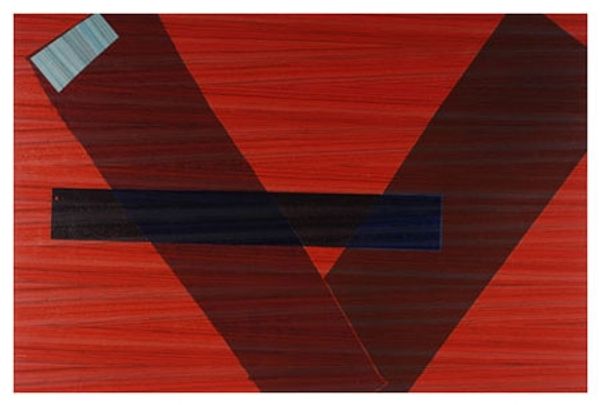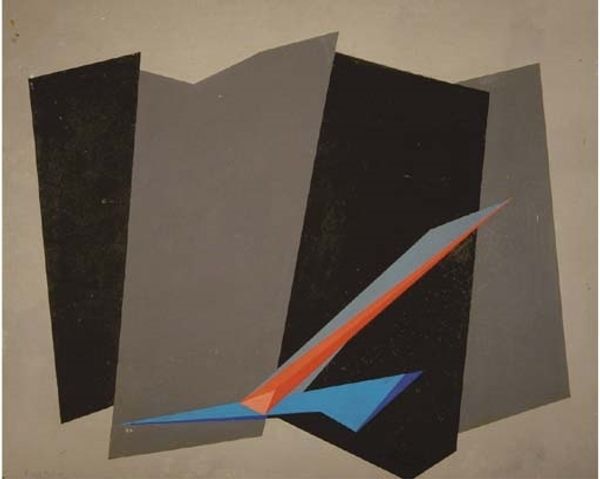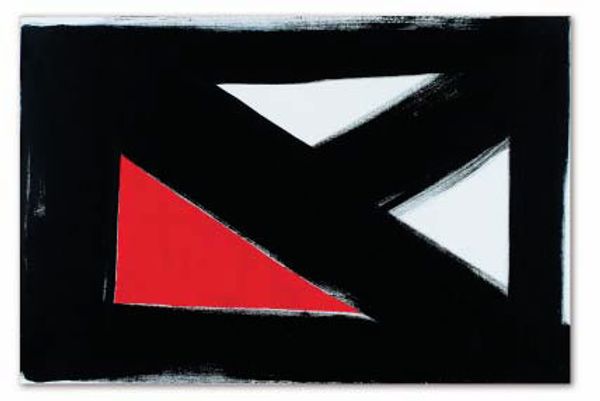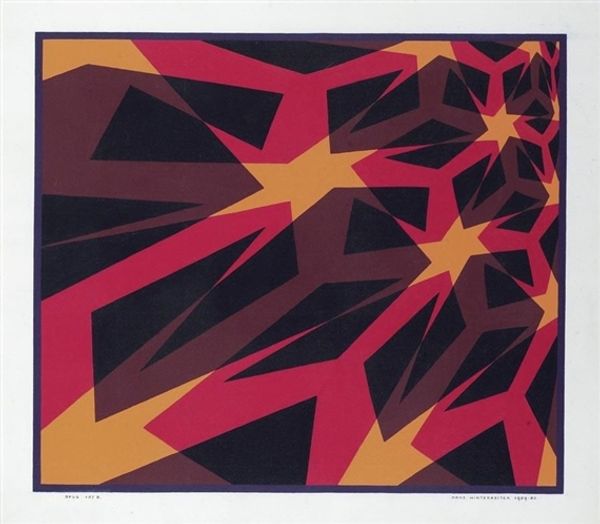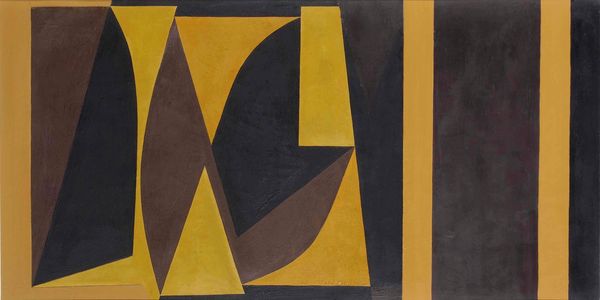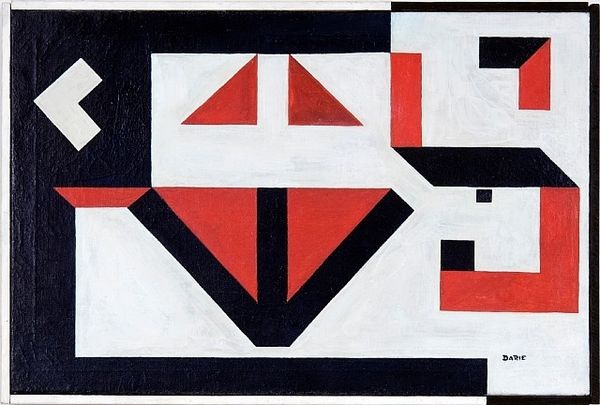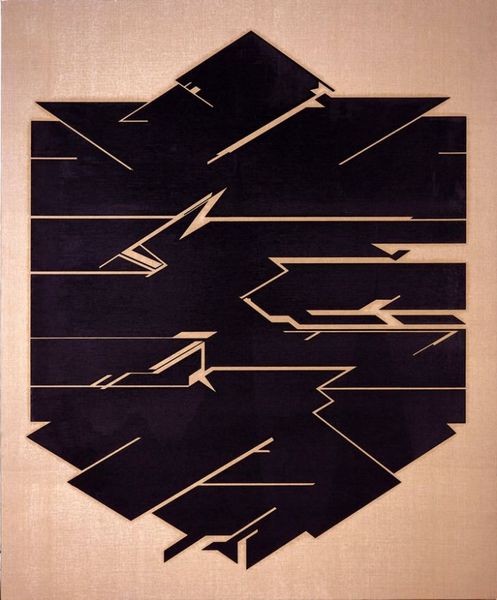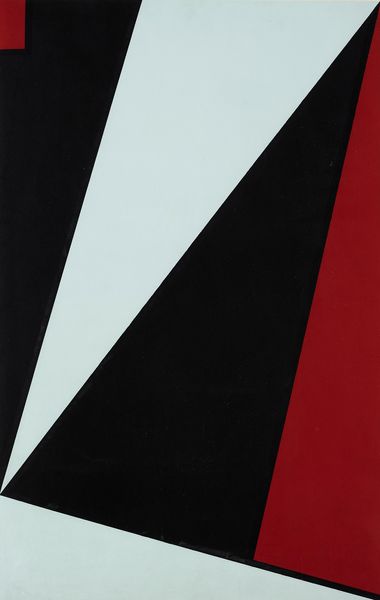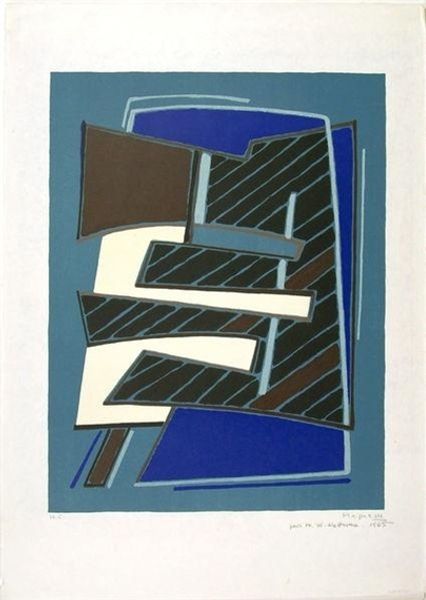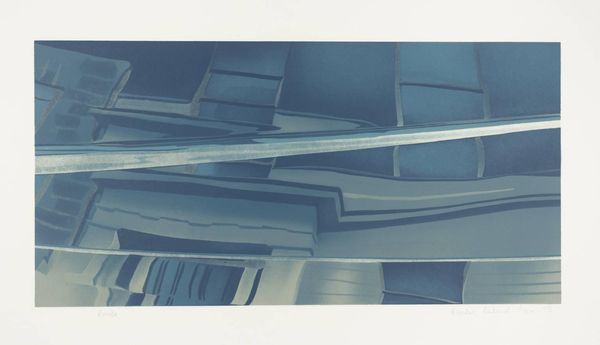
painting, acrylic-paint
#
abstract-expressionism
#
painting
#
acrylic-paint
#
geometric
#
abstraction
#
line
Copyright: Atanasio Soldati,Fair Use
Editor: This is "Composizione" by Atanasio Soldati, created in 1951 using acrylic paint. The painting has this wonderful minimalist feeling, it's built out of such basic shapes, with the red outlines providing an energy despite the fairly cool palette. How do you interpret this work? Curator: Well, I see a world constructed of essential forms. Geometric shapes resonate deeply – squares evoke stability, triangles represent aspiration, circles suggest wholeness. This painting doesn’t depict readily identifiable objects; instead, the geometric elements carry the weight of shared meanings. Do you notice the recurrence of triangles and lines within the overall composition? Editor: I do. I see the sharp angles repeating in various sizes, both filled and outlined. And those parallel black lines crossing the blue… Curator: Exactly! Consider the cultural context. Post-war, there's a global desire to rebuild, and here Soldati uses geometric language as an assertion of order. Look at the red outlines, which have different weights that create their own tensions. Editor: That’s really insightful. So it's like the painting suggests a new symbolic language arising from chaos? Curator: Precisely. Through abstraction, Soldati communicates resilience. Abstraction pushes beyond immediate legibility and engages our deeper capacity to find shared significance within seemingly simple visual cues. Editor: That's fascinating! I had thought it was just shapes, but now I see there is cultural and personal memory ingrained into each symbol and colour. Curator: Indeed. What we find is that even in abstraction, symbols speak, connecting us across time and culture.
Comments
No comments
Be the first to comment and join the conversation on the ultimate creative platform.
